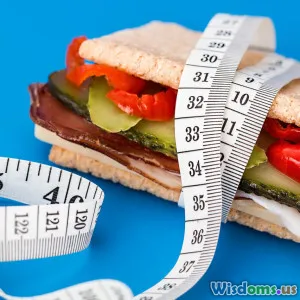
Do Meal Kits Really Save Time and Money? An Honest Breakdown
9 min read Explore if meal kits truly save time and money with this honest, in-depth analysis of convenience, cost, and lifestyle impacts. (0 Reviews)
Do Meal Kits Really Save Time and Money? An Honest Breakdown
In today’s fast-paced world, convenience often sells – especially when it comes to meal preparation. Meal kits have steadily grown in popularity over the past decade, promising fresh ingredients, pre-portioned supplies, and restaurant-quality recipes delivered straight to your door. They claim to save you time, reduce food waste, and cut down the cost of dining at home. But how much of that is true? Do meal kits genuinely save you time and money or are they just an expensive convenience? In this article, we’ll unpack the facts, statistics, and user insights to provide a clear, unbiased understanding of whether meal kits are worth your investment.
What Are Meal Kits?
Meal kits are boxes or bags sent by companies containing pre-measured ingredients along with step-by-step recipes. Services like Blue Apron, HelloFresh, Sun Basket, and Home Chef have transformed home cooking for millions by removing the grocery store run and meal planning hassle. Typically, subscribers choose recipes based on dietary preference, receive fresh ingredients individually wrapped or in bags, and cook meals in roughly 30-45 minutes.
Time Savings: Myth or Reality?
When it comes to saving time, meal kits often market themselves as the ultimate shortcut. But how does reality measure up?
Streamlined Meal Planning and Shopping
One undeniable benefit is that meal kits take the guesswork out of meal planning. According to a 2021 survey conducted by the analysis firm McKinsey, consumers report spending 50% less time planning meals when using meal kits. Skipping the grocery store trip itself saves many people approximately 1 to 2 hours per week, a significant gain for busy households.
Preparation and Cooking Time
While meal kits are designed to require minimal prep—the ingredients are pre-portioned and often pre-chopped—cooking times still hover around typical from-scratch meal lengths. Recipes average 30 to 45 minutes, which is comparable to a moderately complex home-cooked meal. So, while you avoid chopping and measuring, the actual hands-on cooking time remains similar.
For example, Cooking Light clocked total meal preparation plus cooking times for popular meal kit dishes and found they typically take 5-10 minutes less than making the same meal completely from grocery purchases, mostly due to pre-measured ingredients.
Opportunity Costs: Setup and Clean-up
Some users also point out that cleaning multiple pots, pans, and packaging from meal kits may cancel out some time savings. However, many kits design their meals around skillet-friendly or one-pot recipes, aiming to mitigate this issue.
Real Insight: User Experiences
Feedback is mixed. A Consumer Reports 2022 study interviewing 1,000 meal kit users found about 70% felt meal kits became faster after their first few uses once they adapted to the format. However, for others, meal kits felt more like a recreational cooking activity than a speed solution.
Money Matters: Are Meal Kits Cost-Effective?
The other major selling point of meal kits is cost savings — but do they deliver?
Average Costs Compared to Groceries
Meal kits typically cost between $8 and $12 per serving. In contrast, cooking from scratch with grocery store ingredients usually ranges from $4 to $7 per serving depending on cuisine and ingredient choices.
A study featured in Forbes 2023 showed the average meal kit meal costs roughly twice as much as what you would spend shopping for ingredients yourself. The markup primarily covers convenience, packaging, and delivery.
Hidden Savings: Reduced Food Waste
Meal kits provide precise pre-portioned ingredients, which theoretically minimizes food waste, a significant cost factor in home cooking. The Natural Resources Defense Council estimates that Americans waste about 30-40% of their food, amounting to nearly $1,500 annually per household.
While meal kits help reduce waste by tailoring portions, they generate additional packaging waste, impacting environmental costs and indirectly affecting expenses related to waste management.
Coupons, Promotions, and Subscriptions
Many meal kit services attract customers with introductory pricing or discounts, temporarily making them more affordable. However, regular prices can leave meal kits costing more than dining out at casual restaurants when you factor in gratuity, transportation, and other extras.
For instance, HelloFresh offers competitive welcome rates, but once out of the trial period, the price normalizes to the industry standard of $9-$11 per person per meal.
Long-Term Financial Implications
For people who rarely cook, meal kits could reduce impulse eating out or ordering takeout, which is usually pricier. However, heavy home cooks seasoned in budget meal planning are unlikely to save money with meal kits.
Lifestyle Factors That Impact Value
Savings on time and money aren’t the only dimensions. Meal kits affect several lifestyle areas which may influence their overall value.
Cooking Skills and Confidence
Meal kits often introduce users to new cuisines and techniques. First-time home cooks report that meal kits boosted their confidence and inspired more adventurous cooking.
Nutritional Control
Many kits emphasize balanced, portion-controlled meals with fresh ingredients and lower processed carbs or saturated fats compared to typical takeout.
Dining Experience
For some, meal kits bring variety and excitement to dinner time, transforming cooking from a chore into a creative experience.
Environmental Considerations
While meal kits reduce certain types of waste, high packaging usage is a concern. Several companies like Sun Basket have moved to 100% recyclable packaging and local sourcing to offset this.
Conclusion: Are Meal Kits Worth It?
Meal kits are not a one-size-fits-all solution. They undoubtedly save planning and shopping time, which can be liberating for busy professionals or families. They also reduce food waste through precise portions and encourage home cooking with relatively healthy recipes. However, their monetary cost is substantially higher than shopping and cooking traditionally.
If your priority is convenience, time-saving, and culinary inspiration and you don't mind paying a premium, meal kits can be a great addition. But if your focus is strict budgeting and maximizing savings, meal kits probably won't save you money.
Ultimately, the decision hinges on your personal priorities, lifestyle, and cooking preferences. For the right person or family, meal kits offer a blend of efficiency and enjoyment worth the extra cost.
Food is not just fuel—it’s an experience. Whether you choose meal kits or your own grocery expeditions, empowering your kitchen habits with knowledge is the best recipe for success.
Sources:
- McKinsey & Company, "The rise of meal kits in 2021"
- Consumer Reports, "Meal Kit User Experience Study, 2022"
- Forbes, "The True Cost Of Meal Kits, 2023"
- Natural Resources Defense Council, "Food Waste Facts"
- Cooking Light, "How Long Do Meal Kits Really Take to Make?"
Rate the Post
User Reviews
Popular Posts




















